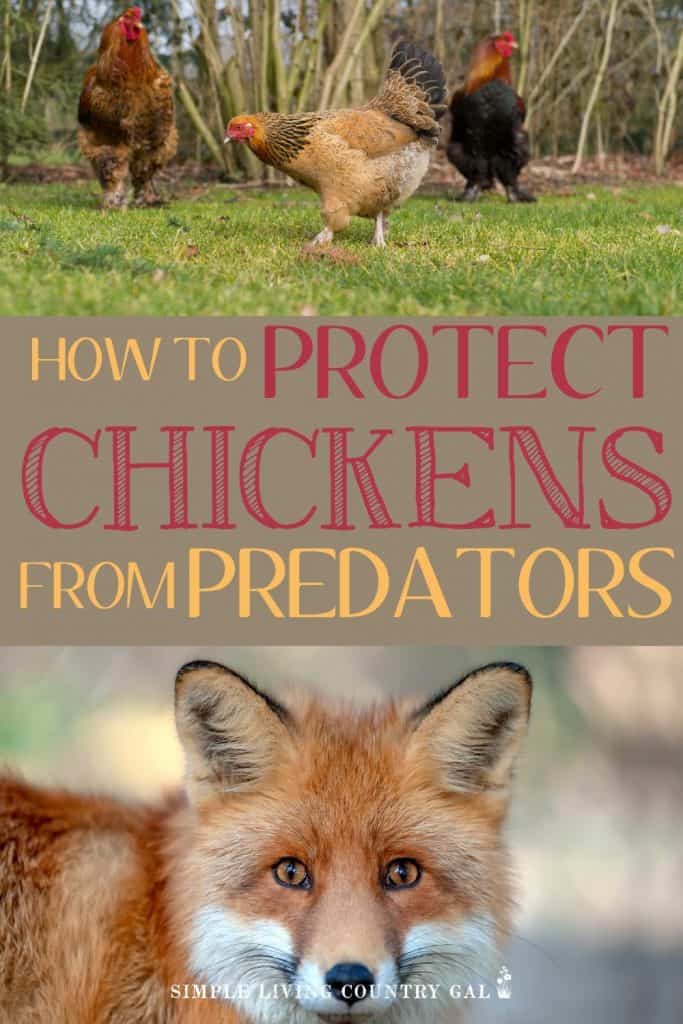
- Chicken predators install#
- Chicken predators windows#
Fill in any holes or cracks in walls or around doors with concrete, caulking, wire, or expanding foam. One half-inch square hardware cloth thwarts raccoons and even keeps mink out. Raccoons can tear through hexagonal chicken wire, so the stronger wire is essential. Chicken predators windows#
Cover all windows with sturdy wire mesh. At dusk and when you plan to be away until after dark, close and securely latch all doors, especially the pop hole door. Some ways to keep predators out of the coop include: That can be easier said than done since a mink can ooze through a one-inch diameter hole while weasels can fit through even smaller cracks. The solution is making entry nearly impossible. Once they get inside predators can easily pluck a plump hen off the roost. Chickens come inside at dusk and are almost comatose when sleeping. The best defense against night shift chicken snatchers is a sturdy tight coop. Most chicken losses occur at night when raccoons, skunks, opossums, owls, mink, and weasels are most likely to prowl. Preventing predation is far more effective than shooting or trapping an animal or two. Shotguns and traps are sometimes used but killing a chicken-eating fox or raccoon can be both illegal and dangerous. Often the first reaction that a flock owner has when birds are killed is to seek revenge. Raccoons are surprisingly abundant even in New York City! Raccoons and domestic dogs probably kill more chickens than any other animals and live in both rural and urban areas. No flock is completely safe from some carnivorous species that would like to eat them. Most importantly, train your chickens to return to the chicken house each night, and always close it up.Humans aren’t the only animal that enjoys a delicious chicken dinner.įoxes, coyotes, raccoons, dogs, mink, owls, and some hawks also find chickens a meaty, easy-to-catch meal.ĭiscovering chickens killed by a mink or carried off by a fox is frustrating. Allow chicken-friendly pets to roam the area around your coop. 
Chicken predators install#
Install motion-sensor lights to discourage nocturnal predation. In general, keep any compost piles away from the coop, and remove any uneaten food scraps the chickens have left before nightfall. If you are concerned about digging predators, dig a trench at least 12 inches deep around your coop and bury hardware cloth. Make sure your henhouse is secure by regularly patching any holes that are big enough for snakes and rats to use.

Using 1-by-2-inch mesh instead of 2-by-3 inch mesh will discourage raccoons or other animals from reaching in and snagging any chicken within reach.ĭown Low: Raising your chicken coop 12 inches off the ground will discourage rats, skunks and snakes from making their home under your chickens' home. Several options are available for enclosing your run: poultry wire, welded-wire mesh, electrified netting, or other fencing material with sufficiently small openings. The Sides: Create a secure poultry run around your coop to keep four-legged predators like coyotes and bobcats from gaining access to your chickens. If your chickens spend the day in an unsecured run, provide cover, such as bushes, picnic tables or garden arbors, for them to use when birds of prey are overhead. Use wire fencing, chicken wire or poultry netting to discourage hawks and owls from having one of your chickens for dinner. The Top: Create some kind of cover for your chicken run. Here are some tips for coop construction and care that will help keep predators at bay. Whether you’re in an urban environment or surrounded by acres of land, other critters may want to cash in on the hard work you're putting into raising chickens.






 0 kommentar(er)
0 kommentar(er)
